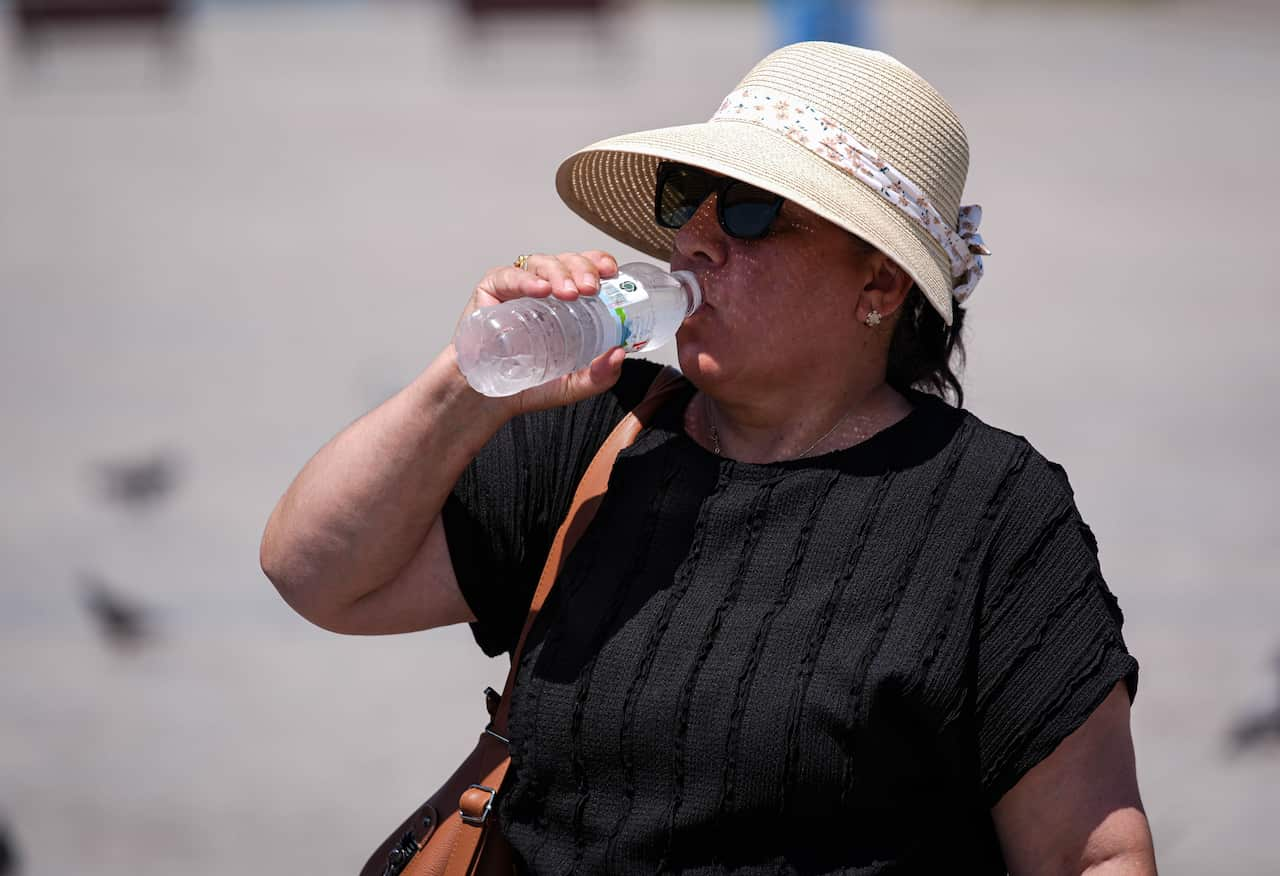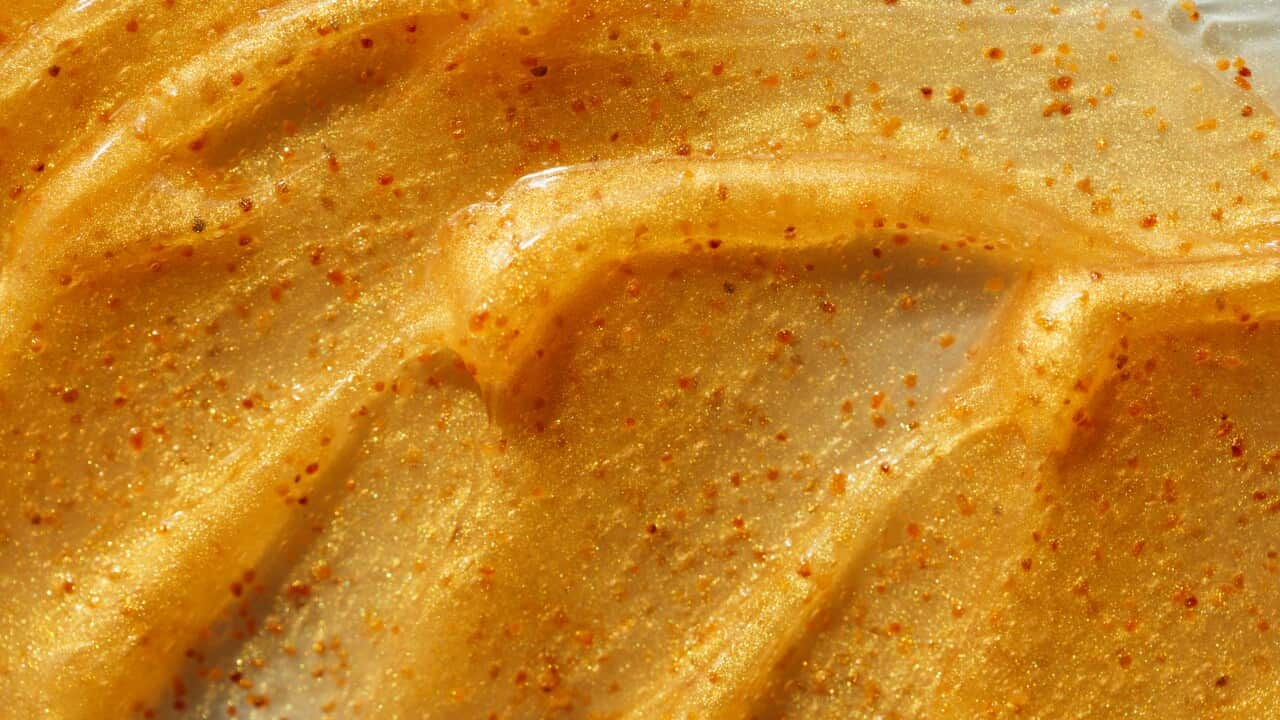Lately it can feel like every drink, meal or piece of plastic is out to get you. One person warns you not to microwave food in plastic containers. Another says to avoid bottled water. And every week, a new headline announces another place microplastics have been found in the body — blood, brain, urine and even breast milk.
So, are we overreacting? Are we doomed? And what do scientists actually know?
Are there microplastics in us?
Yes.
"They’re in the air we breathe, the food we eat, the water we drink," said Dr Cassandra Rauert, a senior research fellow at the University of Queensland who studies the effects of microplastics on human health.
Microplastics are defined as plastic fragments smaller than five millimetres — about the length of a grain of rice — though lots of the particles scientists detect in the environment or in humans are thousands of times smaller. Nanoplastics are even tinier, completely invisible to the naked eye.
But the real question is not whether they're in us, Rauert added, but “how much [are in us] and whether it's a problem.” And that comes down to how we measure microplastics, which in itself comes with challenges.
Why are microplastics so hard to measure?
Measuring is a good place to start because it is at the core of the issue. There are many different types of plastic, and researchers are still working to measure how much is in the body, said Rauert.
"We don't have a good handle on how much we're being exposed to [microplastics]," she said.
In 2022, the World Health Organization (WHO) urged scientists to standardise how they test for microplastics in the body, warning that inconsistent methods were muddying the picture.
Rauert explains that the studies grabbing headlines often don’t acknowledge the limits of current testing.
"I think that the data is not convincing, and then it's being reported in the media, and it's causing a lot of concern in the general population — unnecessary concern."
Other factors could also explain why some viral studies have claimed high levels of plastic in the body.
"We've published a study recently that's showing that a lot of our bodies, for instance, contain a lot of fats, and that can give you a false positive for certain plastics," Rauert said.
"So this needs to be considered in studies that are being published."
This is something Professor Oliver Jones, a chemist at RMIT University, who has studied environmental contaminants, echoed.
He said some plastics, like polyethylene terephthalate, can look like body fat under certain lab tests. When broken down for analysis, both produce the same chemical "signals," meaning a “plastic” reading can sometimes just be fat.
Jones said that when people don’t understand the intricacies or limitations of a study, its findings can easily be sensationalised.
"What makes the headlines are studies that use really high doses we’d never encounter … But science doesn’t work on feelings or likes or vibes or whatever. It’s based on evidence," he said.
Until we know how much we’re exposed to, we can’t know whether any health effects are directly connected.
What can we say about the effects microplastics are having on our bodies?
This is where scientists and health bodies start to diverge.
Researchers agree we’re being exposed, but what happens once those particles enter the body remains unclear.
"So after we ingest them, can they then cross through the gut–blood barrier, get into our bloodstream? We still don't have a good handle on that," Rauert said.
"We don't have a good measure of where it ends up in the body, and we don't know the effects of that as well."
She describes it as "a very young analytical field" that's "progressing very quickly, perhaps a little too quickly," adding that scientists “need to take a step back and look at what’s actually being reported".
The global health view
Food regulators, including Food Standards Australia New Zealand and the European Food Safety Authority, say the small amounts of microplastics currently detected in food and drink are unlikely to harm human health.
Australia’s Department of Health, Disability and Ageing echoed that position in a statement to The Feed, but said it is currently reviewing the latest research on microplastics and plans to release updated health advice later this year.
But the WHO has taken an increasingly precautionary stance.

Activists carrying a huge banner protest on the sidelines of the Plastics Treaty negotiations at the United Nations this year, before talks failed. Source: Getty / SOPA Images/LightRocket
The WHO draws attention to the chemical additives in plastics — these make plastics tougher or clearer, but under heat, they can leach.
It noted that "many additives used in plastics are a health concern".
The WHO stated that studies have linked these substances to "hormonal imbalance, reproductive disorders, infertility, kidney disease, and cancer". Emerging research, it added, also connects plastic-related exposures to obesity, diabetes, and cardiovascular risks.
While the WHO acknowledges there are "many uncertainties" in current research, it says those gaps "do not change the message that measures should be taken to reduce exposure".
Rauert agrees that while microplastics themselves are still being studied, the chemicals they contain are a known concern.

A plastic water bottle left in the sun can heat up, allowing some of the chemicals used in the plastic’s production to potentially leach into the water inside. Source: Getty / Houston Chronicle/Hearst Newspaper
"And we do have a better understanding of health effects from those.”
She said some of those additives, "are endocrine disruptors. There's been links with type two diabetes".
But even here, experts warn against jumping to conclusions.

Food Standards Australia New Zealand currently states that small amounts of microplastics in food and drink are unlikely to harm human health. Source: Bloomberg / Getty Images
WHO said that it provides guidance through its "long-standing programmes on chemical risk assessment and international safety standards and continues to advise precautionary measures to limit unnecessary exposure and strengthen chemical management systems".
This is echoed by Oliver Jones from RMIT, who said the risk of leaching chemicals is already something considered by manufacturers.
"Manufacturers have to do [tests] by law to get their products on sale,” Jones said.
"They have to show that any leaching that occurs is below the regulatory limits or not at all, and they need to do quite big studies in a wide variety of conditions to do that. And then their product is deemed safe for the conditions that it's advertised to be used on."
That’s why, he explains, certain products are labelled "microwave-safe".
What should I do?
"Our bodies are not designed to be digesting up hard pieces of plastic, so reducing how much we're actually eating in our food or drinking in our water can only be a good thing," says Rauert.
Experts say there are small, reasonable ways to cut down your personal exposure:
- Don’t overheat plastic containers. If it’s not labelled microwave-safe, use glass or ceramic instead.
- Avoid leaving plastic water bottles in hot cars or direct sunlight.
- Vent your clothes dryer outdoors — synthetic fabrics shed plastic microfibres into the air.
- Choose reusable materials like metal drink bottles, wooden utensils, or glass storage jars where practical.
Jones says it’s fine to make small changes, but to keep perspective.
"There's plenty of things that are bad for us that we have on a daily basis that we don’t worry about," he said.
"We'll be quite happy to take a car trip or drive too fast, sit in the sun without sunscreen on. But then we worry about microplastics."
This year in Geneva, world leaders have been trying to hammer out a global plastics treaty and failed.
For now, the consensus is cautious: there’s growing evidence of risk, but not yet proof of harm. The advice from health agencies is to reduce exposure where possible — not out of panic, but precaution.
Share
Through award winning storytelling, The Feed continues to break new ground with its compelling mix of current affairs, comedy, profiles and investigations. See Different. Know Better. Laugh Harder. Read more about The Feed



